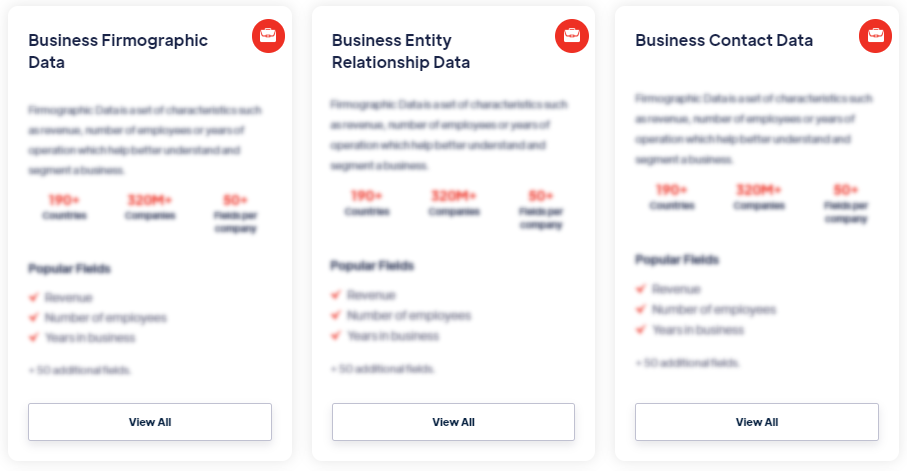Best
Construction Data
Products
Construction data refers to information related to the construction industry, including projects, building materials, equipment, labor, costs, and other relevant aspects. It encompasses a wide range of data sources that provide insights into construction activities, trends, and performance within the industry. Read more
Our Data Integrations


Request Data Sample for
Construction Data

Browse the Data Marketplace

Frequently Asked Questions
What is Construction Data?
Construction
data refers to information related to the construction industry,
including projects, building materials, equipment, labor, costs,
and other relevant aspects. It encompasses a wide range of data
sources that provide insights into construction activities,
trends, and performance within the industry.
What sources are commonly used to collect Construction
Data?
Common sources for collecting construction data include
government agencies, construction companies, industry
associations, market research firms, and specialized data
providers. Government agencies often publish data on
construction permits, building codes, and infrastructure
projects. Construction companies may contribute data on their
own projects and activities. Industry associations and market
research firms provide reports and surveys on construction
trends, forecasts, and market analysis. Specialized data
providers aggregate and offer comprehensive datasets specific to
the construction industry.
What are the key challenges in maintaining the quality and
accuracy of Construction Data?
Maintaining the quality and accuracy of construction data faces
challenges such as data fragmentation, data collection
consistency, and the dynamic nature of the construction
industry. Construction projects may involve multiple entities
and stakeholders, making data collection and standardization
complex. Keeping data up to date and ensuring consistent data
collection methodologies across different sources can also be
challenging. Additionally, the evolving nature of the
construction industry, with changing regulations, technologies,
and market conditions, requires regular updates and adjustments
to maintain data accuracy.
What privacy and compliance considerations should be taken
into account when handling Construction Data?
When handling construction data, privacy and compliance
considerations depend on the nature of the data being collected.
Personally identifiable information (PII) of individuals
involved in construction projects should be handled with care,
adhering to data protection regulations and privacy guidelines.
Additionally, compliance with any applicable industry-specific
regulations and contractual obligations related to data sharing
and usage should be taken into account.
What technologies or tools are available for analyzing and
extracting insights from Construction Data?
Technologies and tools for analyzing construction data include
data analytics platforms, geographic information systems (GIS),
building information modeling (BIM) software, and project
management tools. These tools enable data visualization, spatial
analysis, cost estimation, project planning, scheduling, and
performance tracking. Advanced analytics techniques, such as
machine learning and predictive modeling, can also be applied to
construction data to gain insights and make data-driven
decisions.
What are the use cases for Construction Data?
Construction data has various use cases, including market
analysis, project planning, risk assessment, resource
allocation, cost estimation, performance monitoring, and
industry benchmarking. It helps construction companies,
contractors, investors, and policymakers make informed
decisions, identify market opportunities, mitigate risks,
improve project efficiency, and evaluate industry performance.
What other datasets are similar to Construction Data?
Datasets similar to construction data include infrastructure
data, real estate data, engineering data, architectural data,
and economic indicators related to the construction industry.
These datasets provide complementary information on aspects such
as existing infrastructure, property values, design and
planning, and broader economic conditions influencing
construction activities.
